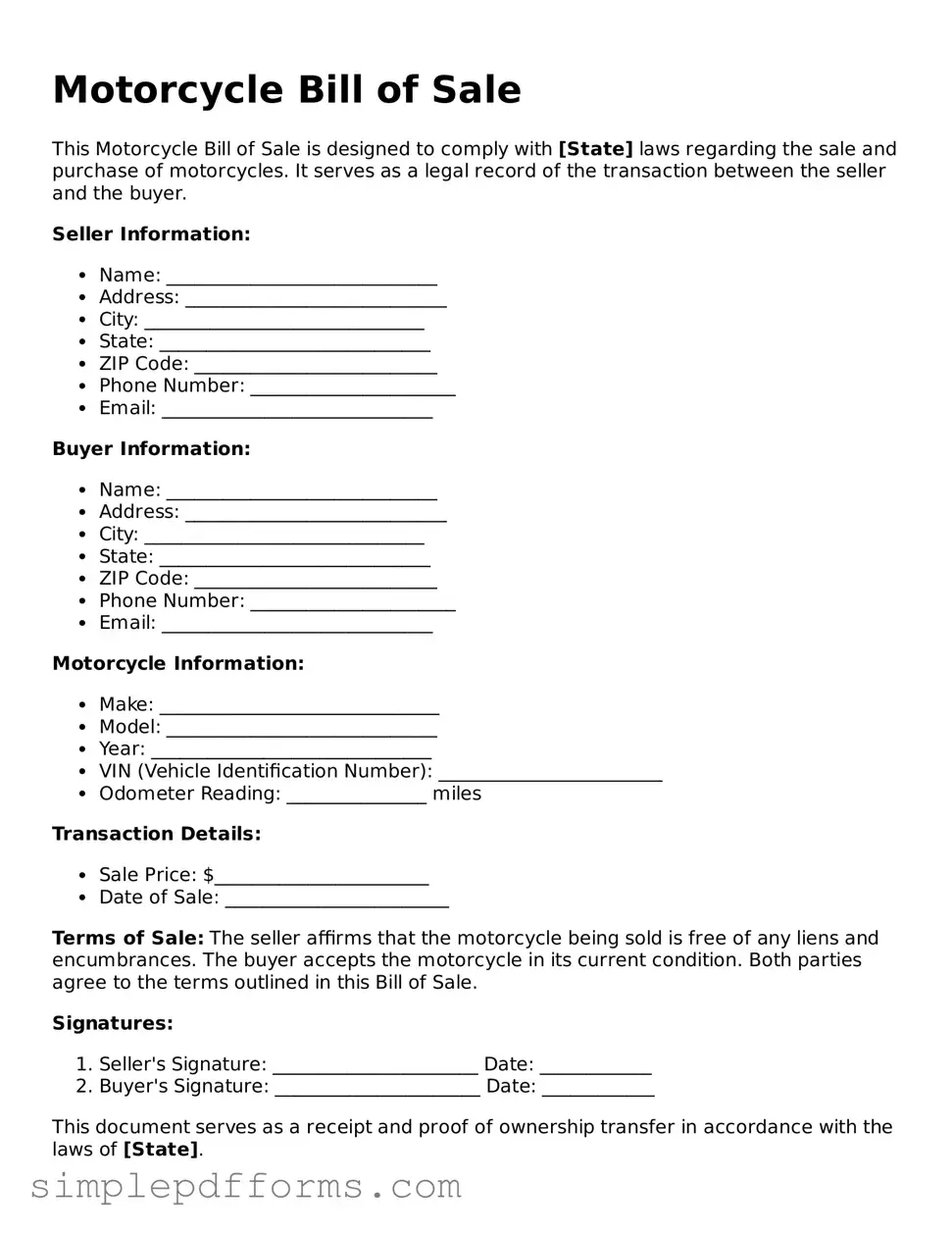When individuals fill out a Motorcycle Bill of Sale form, several common mistakes can occur, potentially complicating the sale or transfer of ownership. One prevalent error is failing to include all required information. Essential details such as the buyer's and seller's names, addresses, and contact information must be accurately recorded. Omitting any of this information can lead to confusion or disputes later on.
Another frequent mistake involves incorrect vehicle identification numbers (VIN). The VIN is a unique identifier for each motorcycle, and any inaccuracies can result in legal issues or complications with registration. It is crucial to double-check the VIN against the motorcycle's title and registration documents to ensure it is recorded correctly.
Some individuals neglect to specify the sale price. This detail is important not only for the transaction but also for tax purposes. By failing to include the sale price, the parties may face difficulties when reporting the sale to tax authorities.
Additionally, many people forget to date the bill of sale. The date serves as a record of when the transaction occurred, which can be important for both parties. Without a date, questions regarding the timeline of ownership may arise, potentially leading to disputes.
Another common oversight is not having both parties sign the document. A bill of sale is only valid when it is signed by both the buyer and the seller. Without signatures, the document may not hold up in legal situations, and either party may find themselves at a disadvantage.
Some individuals also fail to provide a description of the motorcycle. A detailed description, including make, model, year, color, and any distinguishing features, is essential for identifying the vehicle in question. Without this information, there could be misunderstandings regarding which motorcycle was sold.
People sometimes use vague language in the bill of sale. Clarity is crucial in legal documents. Phrases that are ambiguous can lead to differing interpretations, which may result in disputes. It is advisable to use clear and precise language throughout the form.
Another mistake involves not keeping a copy of the completed bill of sale. Both parties should retain a copy for their records. This serves as proof of the transaction and can be useful if any issues arise in the future.
Some individuals overlook the importance of including any warranties or guarantees. If the seller is offering a warranty, it should be clearly stated in the bill of sale. Conversely, if the motorcycle is sold "as is," this should also be explicitly noted to avoid misunderstandings.
Lastly, individuals may not seek legal advice when needed. While it is possible to complete a bill of sale without assistance, consulting with a legal professional can help ensure that all necessary elements are included and that the document is legally sound. This step can prevent future complications and provide peace of mind to both parties involved.
